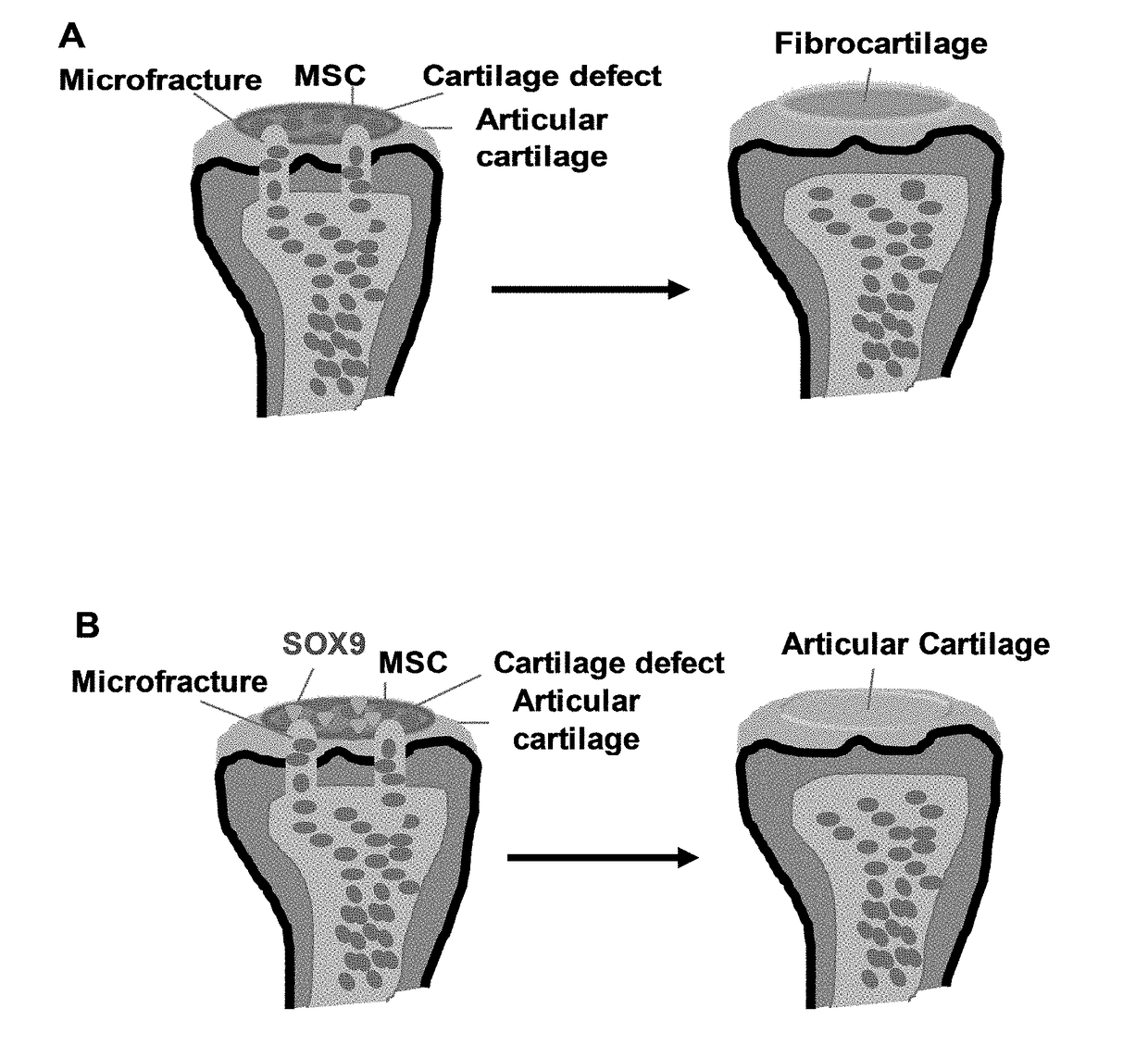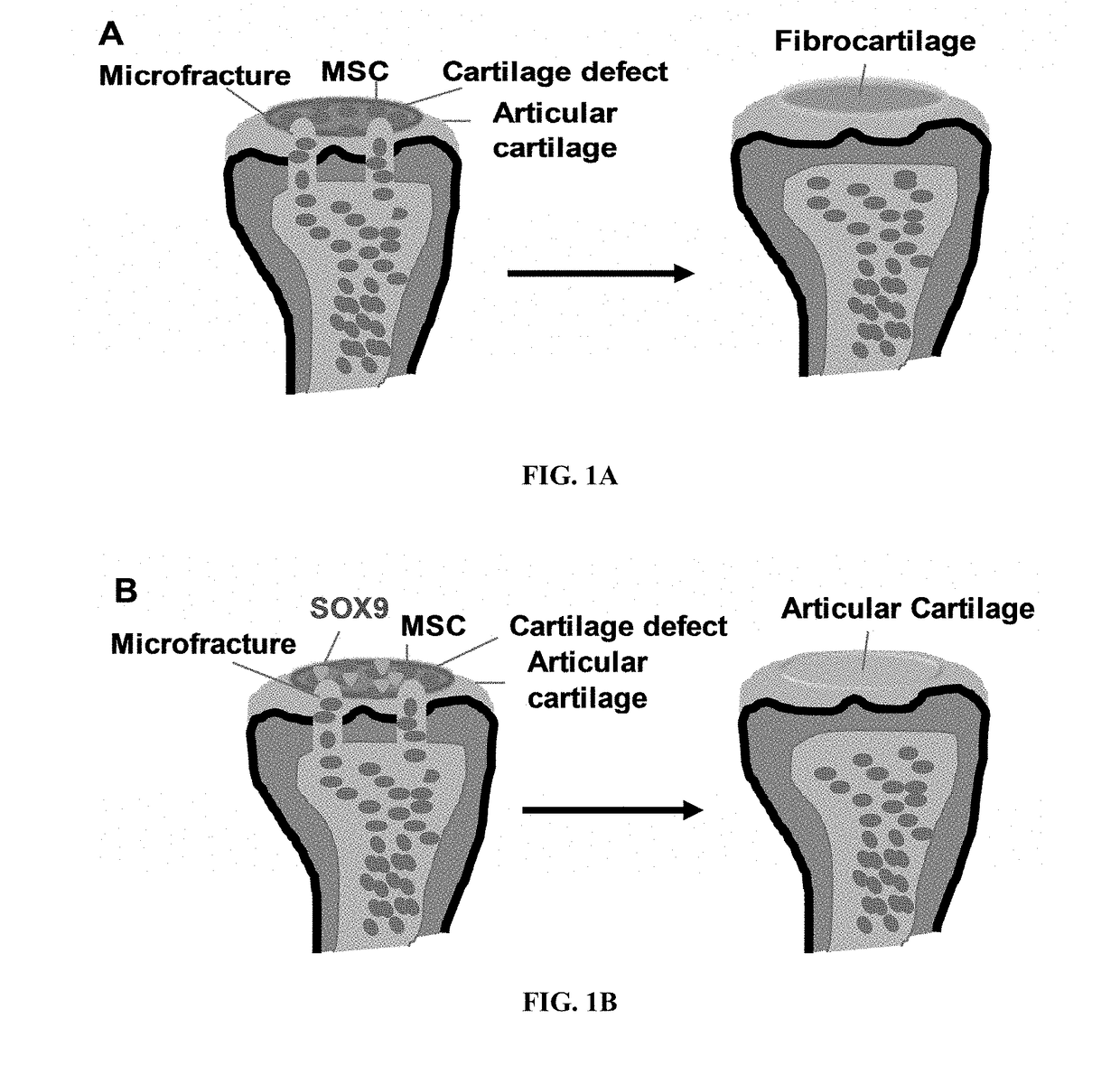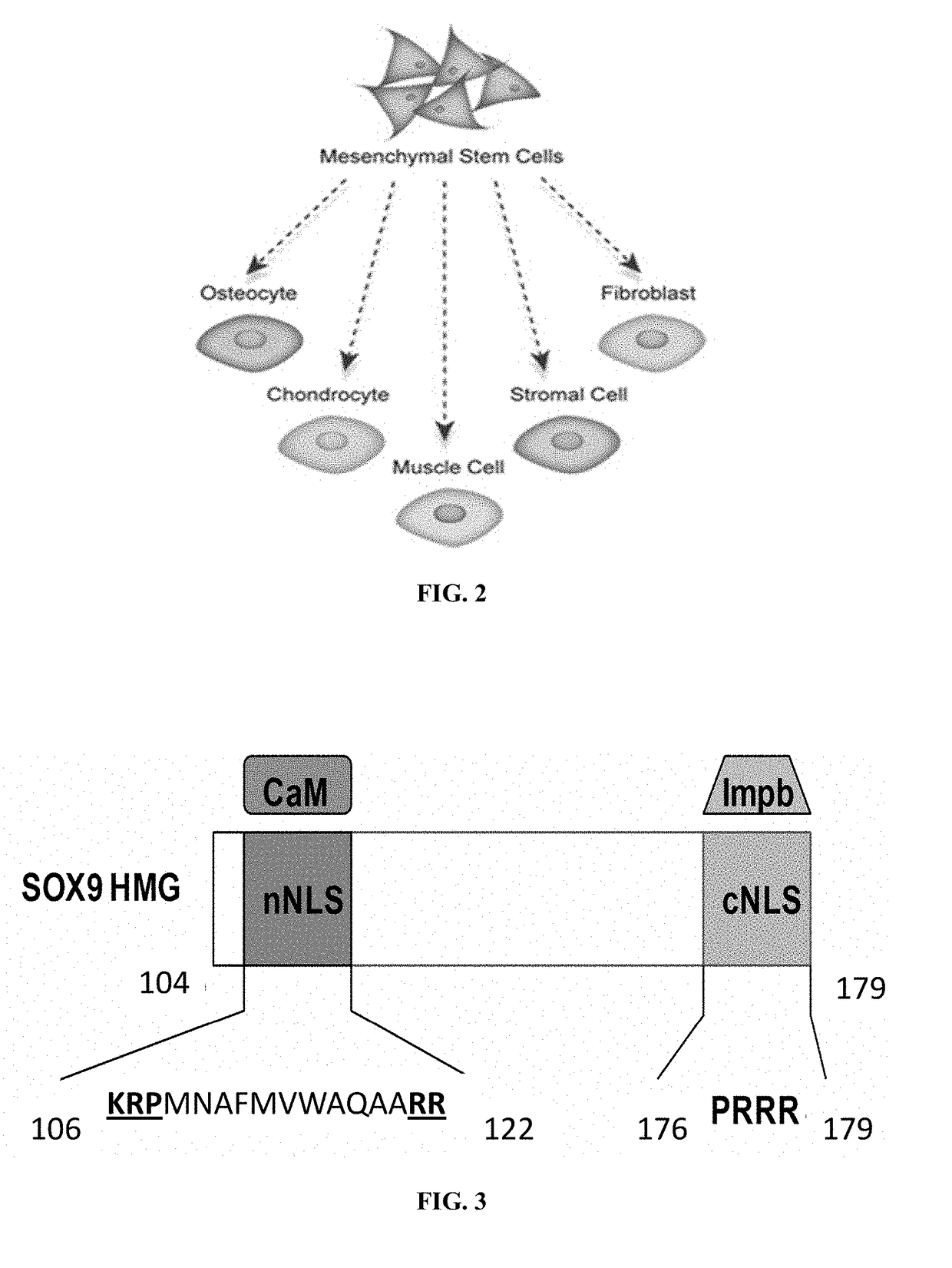Methods for repairing cartilage damage
a cartilage damage and cartilage technology, applied in the field of cartilage damage repair methods, can solve the problems of limited regeneration capacity, low cell density, limited nutrient supply of cartilage, etc., and achieve the effect of facilitating the penetration of the agen
- Summary
- Abstract
- Description
- Claims
- Application Information
AI Technical Summary
Benefits of technology
Problems solved by technology
Method used
Image
Examples
example 1
[0056]Super-charged SOX9 (scSOX9) comprising SOX9 protein fused with super-charged green fluorescence protein (scGFP) can penetrate MSCs in vitro.
[0057]Method
[0058]Commercial human MSCs (ScienCell Research Laboratories) at passage 5 were maintained and expanded in culture medium in sub-confluence condition. Induction of MSC differentiation was carried out in high-throughput cell aggregate culture as described. 2.5×105 cells / well MSC cells in 0.2 ml are cultured in V-bottomed polypropylene 96-well plates. For positive control, MSCs were cultured in DMEM-HG supplemented with 10% ITS+Premix Tissue Culture Supplement (Becton Dickson), 10−7 M dexamethasone and 10 ng / ml TGF-β1. Under this culture condition, MSCs undergo chondrogenic differentiation within 2-3 weeks, producing abundant extracellular matrix composed primarily of cartilage-specific molecules such as type II collagen and aggrecan. The expression of these cartilage markers were used as evidence of the chondrogenic differentiat...
example 2
[0064]Super-charged SOX9 (scSOX9) comprising SOX9 protein fused with super-charged green fluorescence protein (scGFP) can induce chondrogenesis in vivo.
[0065]The release of scSOX9 from carrier was tested. A commercial bilayer collagen membrane (Bio-Gide) was used to serve as a carrier for scSOX9 to be administered at the site of microfracture. A Bio-Gide membrane at 4 mm in diameter was soaked in 100 μg / ml of scSOX9 solution for one hour. Green fluorescence was grossly visible on the Bio-Gide membrane, and 60% of the total scSOX9 was carried. Release of scSOX9 from Bio-Gide membrane was tested by rinsing the membrane with PBS containing 20 U / ml heparin (pH7.4) for 1 hour, over 95% of scSOX9 bound on Bio-Gide membrane was released and re-dissolved in solution.
[0066]The efficiency of scSOX9 delivery into MSC in vivo was assessed. A cylindrical cartilage defect of 4 mm in diameter and 3 mm in depth was created in patellar groove of the femur of New Zealand female rabbits. Microfracture...
example 3
[0068]Design, construct and screen cell-penetrating, non-immunogenic SOX9 protein variants for reprogramming MSC to chondrocytes in vitro.
[0069]The ability of scGFP fused proteins to efficiently penetrate into cells depends on the strong positive charge of the scGFP moiety, or the fusion proteins' net theoretical charge to molecular weight ratio. Another way to make the SOX9 protein transducible is to add a cell-penetrating peptide (CPP) to SOX9. Upon studying its sequence using the support vector machine (SVM)-based model, an internal putative CPP (177YQPRRRKSVK186) has been identified embedded in SOX9 (Table 1). Therefore, it is possible that the native SOX9 itself is capable of penetrating into cells without the help of the scGFP moiety. Coincidently, this putative CPP also contains the cNLS as shown in FIG. 3.
[0070]To further enhance the strength of the putative CPP and improve the ability of SOX9 transduction, a series of SOX9 variants are constructed by initially replacing ind...
PUM
| Property | Measurement | Unit |
|---|---|---|
| Composition | aaaaa | aaaaa |
| Biocompatibility | aaaaa | aaaaa |
| Bioabsorbable | aaaaa | aaaaa |
Abstract
Description
Claims
Application Information
 Login to View More
Login to View More - R&D Engineer
- R&D Manager
- IP Professional
- Industry Leading Data Capabilities
- Powerful AI technology
- Patent DNA Extraction
Browse by: Latest US Patents, China's latest patents, Technical Efficacy Thesaurus, Application Domain, Technology Topic, Popular Technical Reports.
© 2024 PatSnap. All rights reserved.Legal|Privacy policy|Modern Slavery Act Transparency Statement|Sitemap|About US| Contact US: help@patsnap.com










